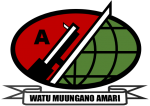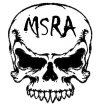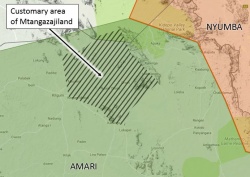DATE Africa Non-State Threat Actors and Conditions
DATE Africa > DATE Africa Non-State Threat Actors and Conditions ←You are here
| Amari | Ziwa | Kujenga | Nyumba |
|---|---|---|---|
Violent Extremist Groups
Islamic Front in the Heart Africa (AFITHA)
Hizbul al-Harakat
Hizbul al-Harakat, more commonly known as al-Harakat is a jihadist fundamentalist group based in central East Africa. Its leadership had previously pledged itself to the militant Islamist organization Al-Qaeda, but quarrels and interpersonal conflicts led to al-Harakat distancing itself from the group. Since then, the group has withdrawn from the major cities, controlling a few rural in the rough maintains of western Nyumba. The group describes its purpose as waging jihad against "enemies of Islam."
Insurgencies
Amarian People’s Union (APU)
The Amarian People’s Union (APU) is the militant wing of the Amarian People’s Party (APP). The APU has openly espoused violent actions when political desired are unfulfilled. The APU’s members are predominantly hostile and would likely support enemies of Amari. The APU is responsible for numerous attacks against government facilities and military or police forces. They have also targeted Amari civilians whom they identify as “non-loyal.” The most common attacks include government posts or personnel, machines and power facilities, and civilian crops.
Free Tanga Youth Movement (FTYM)
The Free Tanga Youth Movement (FTYM) is a separatist insurgency operating almost exclusively in the Tanga region of northeastern Kujenga. The historic occupants of the region have resisted their inclusion in Kujenga and have repeatedly petitioned the government to allow ceding their ancestral homeland to be with Lou Tribe kin to the north in Amari. The FTYM has claimed responsibility for numerous small attacks against government personnel and facilities in within Tanga and as far as Dar es Salaam. FTYM elements have been blamed for attacks on both regional and international peacekeepers. The FTYM can be extremely volatile and will be hostile to anyone they perceive as supporting Kujengan interest over theirs.Pemba Island Native Army (PINA)
The Pemba Island Native Army (PINA) is a low-level nativist insurgency, fighting for increased autonomy and relief from alleged Amarian oppression. Low-level violence and vandalism has been directed against Amari officials and BGC units tasked with providing security on the island. While PINA is largely bluster, radical elements break out and have attacked state forces and anyone they deem an “outsider.” The most violent acts usually follow pressing of Amari policies and BGC patrols.
Guerrilla Groups
Army of Justice and Purity (AJP)
Militias
Mara-Suswa Rebel Army (MSRA)
The Mara-Suswa Rebel Army (MSRA) is an aggregate of multiple rebel groups and militias in central Amari, west of Nairobi. The group is allegedly responsible for widespread violence and harassment throughout the region. They have also conducted attacks against tourists and villages in Kujenga and Ziwa. This group is known for brutality and has taken responsibility for attacks on tourists and traffic along secondary roads. Territorial fighting between rival factions has made travel in remote rural areas almost impossible - particularly at night, where sustained gunfire is a nightly occurrence.
Kujengan Bush Militias
(content goes here)
Organized Criminal Groups
Donya Syndicate
(content goes here)
Hodari Cartel
The Hodari Cartel is the largest and most powerful heroin trafficking organization in the region. Its primary operating base is in and around the Port of Mombasa, although it operates processing and distribution nodes throughout Amari. Limited, tense cooperation among other regional drug trafficking organizations may exist to minimize public or political backlash.
Miscellaneous Conditions
Illicit Mining Operations
(content goes here)
"Mtangazajiland"
The upper northwestern area of Amari, nicknamed "Mtangazajiland”" – land of the wanderers, is a de facto homeland for former child soldiers. Many of the villages were developed by Amari government programs, while some developed organically as populations swelled. The people in the villages are mostly single men between 16 and 40 years old that escaped forced service with militias and other forces in Nyumba, although some have started families.There are approximately 15-20 villages in the area, with a few in decline and a few splinters from other villages. The Amari Interior Ministry provides partial support to many of the villages to help rehabilitate the men and prevent potential conflict from migrating elsewhere. Villagers are predominantly friendly towards Amari officials, but are suspicious of outsiders.
Cross-border militia raids from Nyumba against the villages occur with some frequency and can be extremely brutal. The level of villager participation in illicit trafficking, interdiction of commercial traffic, or raids on other villages or refugee settlements to supplement state stipends is not known.
Amari military forces regularly allocate resources and provide assistance and monitoring of the villages to ensure their ongoing stability and rehabilitation. These former child soldiers likely maintain numerous small arms. The amounts and types or larger weapons and organization levels is unknown. The villages may present a buffering effect in the northwest, allowing the military and BGC to be more effective in this somewhat wild region.
| DATE Africa Quick Links . | |
|---|---|
| Amari | Political • Military • Economic • Social • Information • Infrastructure • Physical Environment • Time |
| Kujenga | Political • Military • Economic • Social • Information • Infrastructure • Physical Environment • Time |
| Nyumba | Political • Military • Economic • Social • Information • Infrastructure • Physical Environment • Time |
| Ziwa | Political • Military • Economic • Social • Information • Infrastructure • Physical Environment • Time |
| Other | Non-State Threat Actors and Conditions • Criminal Activity • DATE Map References • Using The DATE |








